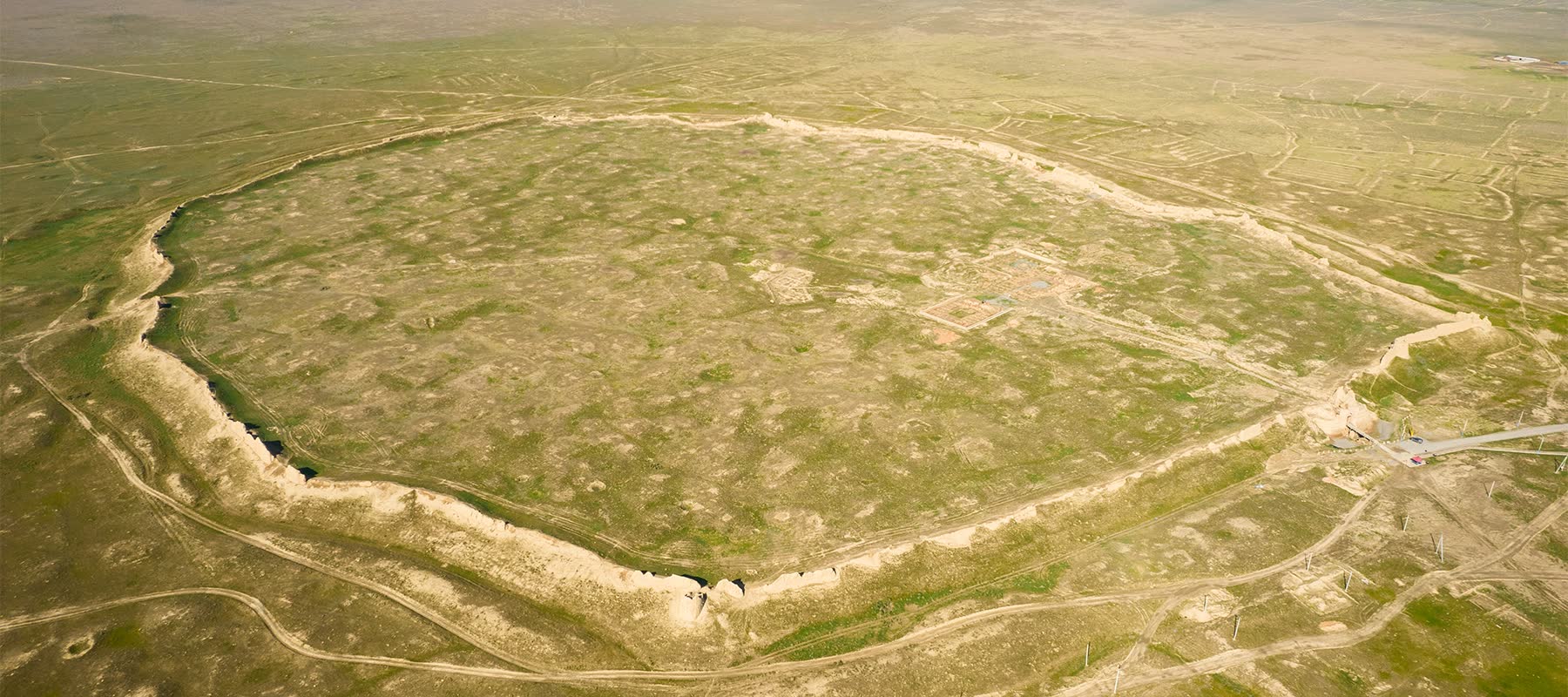The Sauran Fortress
Sauran, also spelled as Sauran City or Sauran Fortress, is an ancient archaeological site located in southern Kazakhstan. It is one of the most notable historical and cultural landmarks in the region and provides insights into the history of this area.
Here are some key details about Sauran:

Location: Sauran is located near the city of Turkistan, in the southern part of Kazakhstan. Turkistan itself is known for its historical significance and is a cultural center in the region.
History: Sauran was originally a fortified city that dates back to the 10th century. It played a crucial role as a regional center and served as an important stop along the Silk Road, the ancient trade network that connected the East and West.
Architecture: The Sauran Fortress features well-preserved ancient walls and structures that reflect the architectural style of the time. It is characterized by its massive walls and watchtowers, which were built to protect the city.
Cultural Significance: The city's historical importance is not just architectural; it's also a testament to the cultural exchanges and interactions that took place along the Silk Road. The city was influenced by various cultures and ethnic groups, which is evident in its architecture and artifacts.
Archaeological Site: Sauran is now an archaeological site, and ongoing research and excavations have revealed insights into the city's past. Artifacts found at the site have shed light on the daily life, trade, and culture of its inhabitants.
Visitor Attraction: Sauran is open to visitors and has become a popular destination for those interested in history and archaeology. Tourists can explore the ruins, walk along the ancient walls, and learn about the site's history at the on-site museum.
UNESCO World Heritage Status: Sauran, along with other Silk Road sites in Kazakhstan, has been proposed as a UNESCO World Heritage Site due to its historical and cultural significance.
Sauran represents a significant piece of Kazakhstan's historical and cultural heritage and provides valuable insights into the ancient Silk Road trade routes and the interactions between different civilizations in Central Asia. It is a tangible reminder of the region's rich history and its importance as a crossroads of cultures and trade.